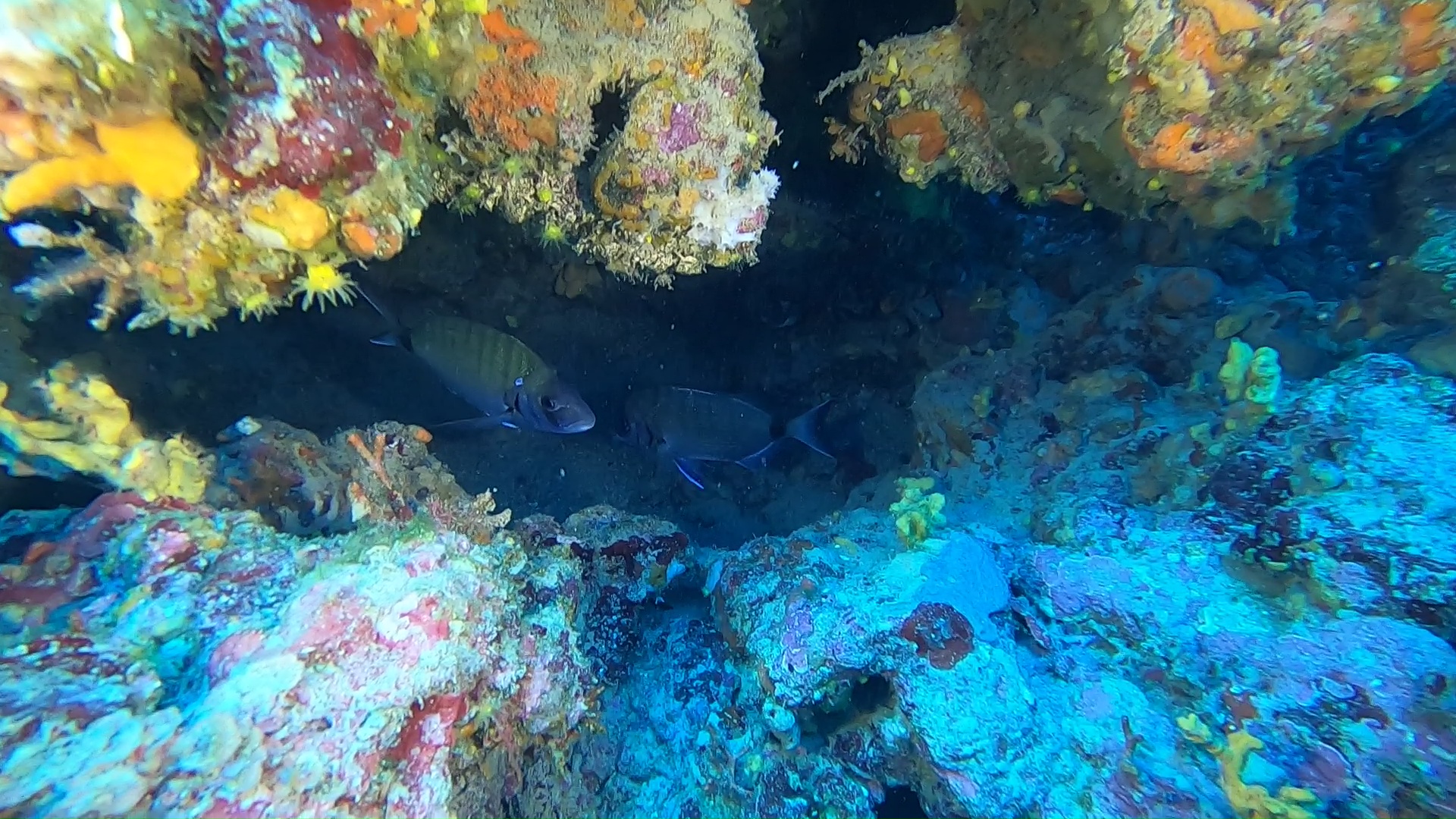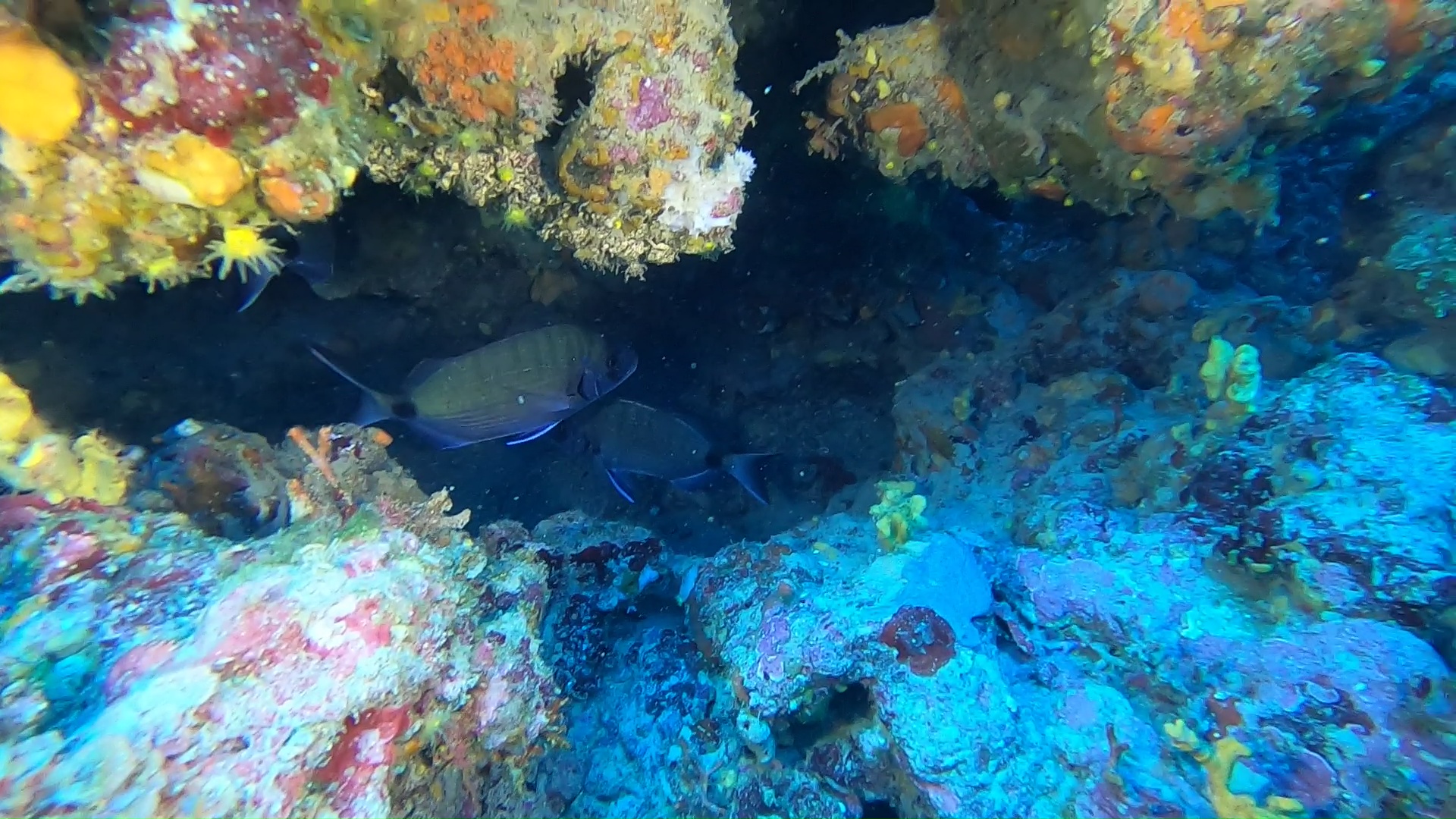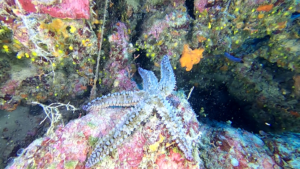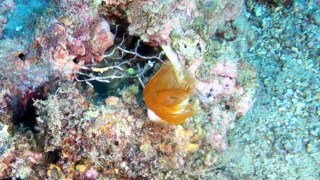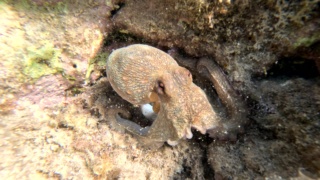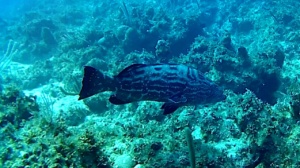Seabream, Diplodus Sargus, is one of the most common fish of our seas and of the Mediterranean, it can be found in any type of seabed and habitat. It is a strongly territorial and social species, in fact it lives in groups of different individuals and different sizes. In this video we see him sharing a hole with other specimens of the diplodus genus, and when he is deep and safe among the rocks he becomes even less suspicious of the diver, allowing himself to be filmed even at close range.
Diplodus Rafinesque, 1810 is a genus of marine bony fish belonging to the Sparidae family, commonly known as white bream.
Description
Although the size of the bream that can generally be observed near the coasts frequented by man is rather small, some specimens can exceed 40 cm and 2 kg in weight.
All the species of white breams have a rounded and compressed body, with a silvery-gray livery and a black spot just before the tail, or on the caudal peduncle.
D. vulgaris is easily distinguished from other species by the presence of a showy black nuchal band, which extends from the back to the insertion of the pectoral fins. The pointed snout is instead one of the distinctive characters of D. puntazzo, together with 7-8 dark vertical stripes on the sides. D. sargus also has 8-9 dark vertical streaks and can be distinguished by the presence of a dark spot at the base of the pectoral fins. D. annularis, with a slightly more elongated shape and smaller maximum dimensions than the previous ones, does not have pronounced vertical striae, has a gray-silver color with yellow-green shades and yellow ventral fins.
Distribution and habitat
These fish are widespread in the Mediterranean Sea and the eastern Atlantic Ocean, where they live in rocky or mixed bottoms, from coastal waters to a depth of 100 meters. Although the white bream, and in particular D. sargus, a coveted prey of underwater hunters, mainly find refuge in burrows placed at a certain depth, when the conditions of environmental tranquility allow it, in the search for food (the main resource are the urchins that they are crushed with a suitable dental apparatus) frequent the strip close to the shoreline, approaching the surface considerably.
https://it.wikipedia.org/wiki/Diplodus
 English
English Italiano
Italiano
